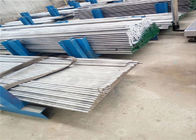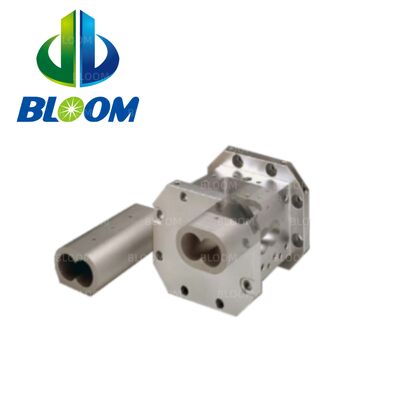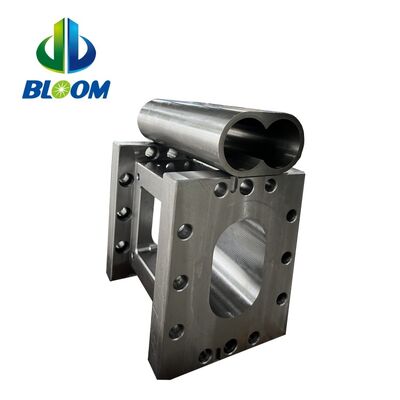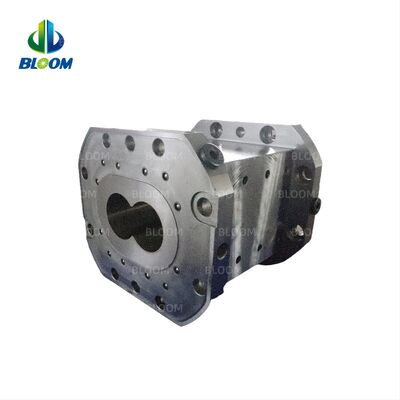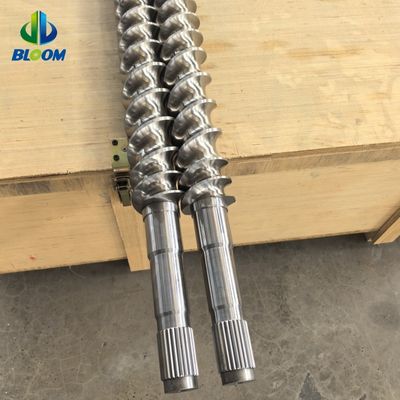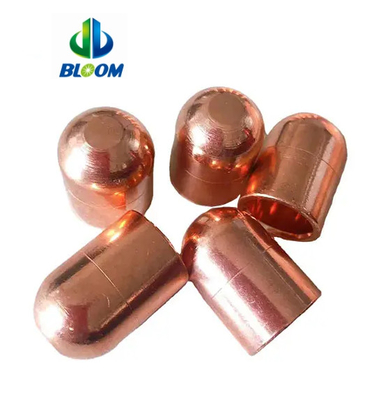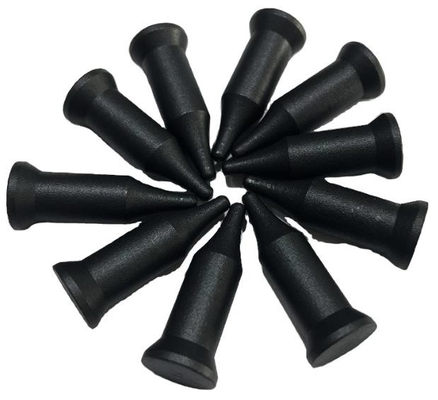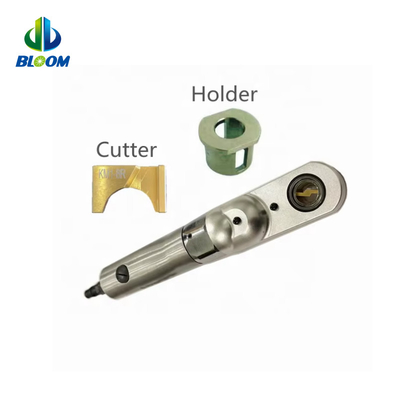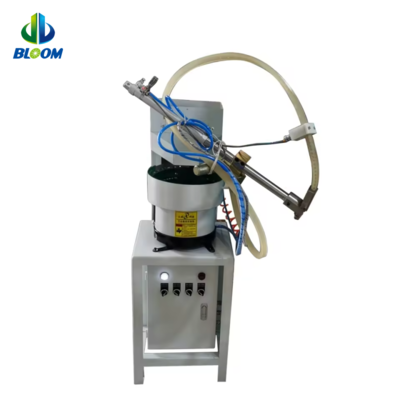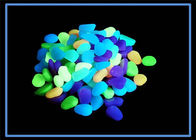Silicone Nitride Parts high With Hardness Low Density wear Resistance And High Temperature Resistance
1 . Descriptions:
Silicon nitride ceramic material has high hardness, low density, wear resistance and high temperature resistance. The rolling body is made of silicon nitride ceramic, while the other components are paired with bearing steel to form friction pair, the friction coefficient is extremely low, and it is not easy to stick and glue with the cage.Therefore, it has been considered as the preferred material for manufacturing high-speed and precision bearings.
The use of ceramic rollers in bearings was originally intended to meet the stringent operating requirements of advanced gas turbines.Later in the machine tool spindle, motor and generator and other fields of various applications, accelerate the application of ceramic rolling body development.
Hybrid rolling bearings with ceramic rollers are used in many challenging applications.Areas such as railways and the renewable energy industry, such as wind turbines, are already being used in large Numbers.
Characteristics of silicon nitride ceramic roller:
Silicon nitride ceramic bearing ball:
Silicon nitride ceramic ball has a series of metal materials such as high ceramic strength, good wear resistance, high stiffness, corrosion resistance, high temperature resistance, electrical insulation, magnetic conductivity, small specific gravity and so on. It has become the first material of ceramic bearing.

Silicone Nitride Ceramic Features are as follows:
1. High rigidity, high strength and high hardness.
2. Strong corrosion resistance, can be used in strong acid and strong alkali.
3. High temperature resistant, silicon nitride ceramic balls under 1000 ℃ environment can be normal use.
4. Non-magnetic and electrical insulation.
5. Low density (3.26g/cm3), about 60% lighter than steel ball, reducing wear and noise.
6. The low linear expansion coefficient (3.2 * 10-6/K), almost 1/4 of the bearing steel, can withstand the rapid change of temperature.
7. Self-lubricity, can solve the pollution caused by the lubrication medium and add inconvenience, can be used in vacuum and high temperature.
8. Drug resistance, high mechanical strength, low thermal conductivity.
|
|
|
|
|
|
|
|
|
Mechanical Characteristics |
Color |
light yellow |
White |
Ivory |
Black
Grey |
Black |
|
| Bulk Density |
3.85 |
3.93 |
6.02 |
3.2 |
3.16 |
g/cm3 |
| Water Absorption |
0 |
0 |
0 |
0 |
0 |
% |
| Bending Strength |
310 |
370 |
800 |
750 |
450 |
MPa |
| Compressive Trength |
2,400 |
2500 |
3000 |
3800 |
3900 |
MPa |
| Elastic Modulus |
340 |
390 |
200 |
290 |
420 |
GPa |
| Fracture Toughness |
3~4 |
4 |
8 |
7 |
3.5 |
MPa m1/2 |
| Weber Coefficient |
12 |
12 |
15 |
15 |
- |
m |
| Vickers Hardness |
1,600 |
1850 |
1200 |
1700 |
2800 |
HV 0.5 |
Thermal Characterics |
Coefficient of Line Thermal
Expansion |
7~8 |
7~8 |
10 |
2 |
3.7 |
10-6 K-1 |
| Thermal Conductivity |
29 |
32 |
3 |
20 |
160 |
W/mK |
Thermal Shock Resistance
(Put in Water) |
200 |
280 |
300 |
750 |
- |
ΔT °C |
| Max Working Temperature |
1,600 |
1700 |
1000 |
1300 |
1950 |
°C |
Electrical Characteristics |
Volume Resistance At 20°C |
>1014 |
>1014 |
>1013 |
>1014 |
- |
Ωcm |
| Dielectric Strength |
15×106 |
15×106 |
11×106 |
10×106 |
- |
V/m |
| Dielectric Constant |
10 |
10 |
33 |
- |
- |
εr |
One MHZ Dielectric Loss Angle
at 20°C |
0.0002 |
0.0001 |
0.0016 |
- |
- |
tanδ |
Chemical Characteristics |
Nitric Acid (60%) 90°C |
0.1 |
0.05 |
≒0.00 |
1 |
≒0.00 |
24H WT Loss mg/cm2 |
| Sulphuric Acid (95%) 95°C |
0.34 |
0.22 |
0.04 |
≒0.00 |
≒0.00 |
| Caustic Soda (30%) 80°C |
0.95 |
0.04 |
0.08 |
0.2 |
≒0.00 |
2 . Performance characteristics of silicon nitride materials
A . Physical properties of silicon nitride:
a . Thermal properties: It is a high-temperature refractory substance with no melting point. It decomposes at about 1900°C under normal pressure. It has strong creep resistance under high pressure. The softening point of reaction sintered silicon nitride without binder can be as high as 1800°C;
b . Good thermal conductivity;
c . Small thermal expansion coefficient;
d . Good electrical insulation performance, small dielectric coefficient, high breakdown voltage.
B . Chemical properties of silicon nitride:
a . Oxidation resistance: It does not react with oxygen in a dry atmosphere below 800 °C;
b . Molten metal corrosion resistance: silicon nitride does not infiltrate and corrode elemental metal melt (except copper);
c . Resistance to acid, alkali and salt corrosion: easily soluble in hydrofluoric acid, and ineffective with dilute acid.
C. Mechanical properties of silicon nitride:
a . High temperature strength is good, and the high temperature strength at 1200°C has little attenuation compared with the room temperature strength. In addition, its high temperature creep rate is very low. These are determined by the nature of strong covalent bonds;
b . High hardness, second only to a few superhard materials such as diamond, cubic BN, and B4C;
c . The friction coefficient is small and self-lubricating, which is similar to the metal surface with oil.
3 . Application of silicon nitride ceramics

Automotive industry: The main application of sintered silicon nitride is in the automotive industry as an engine part material. In spark ignition engines, silicon nitride is used for lower wear rocker pads, turbochargers for lower inertia and less engine lag, and waste gas control valves for increased acceleration.
Bearings: Compared with other ceramics, silicon nitride ceramics have good impact resistance. Therefore, ball bearings made of silicon nitride ceramics are used in performance bearings. A representative example is the use of silicon nitride bearings in the main engines of NASA's space shuttles. Since silicon nitride ball bearings are harder than metal, this reduces contact with the bearing track. Silicon nitride ball bearings can be found in high-end automotive bearings, industrial bearings, wind turbines, motorsports, bicycles, roller skates and skateboards.
Metal cutting tools: Bulk monolithic silicon nitride is used as a material for cutting tools due to its hardness, thermal stability and wear resistance. Especially recommended for high speed machining of cast iron. Hot hardness, fracture toughness and thermal shock resistance mean that sintered silicon nitride can cut cast iron, hard steel and nickel-based alloys.
Electronics: Often used as insulators and chemical barriers in the manufacture of integrated circuits to electrically isolate different structures or as etch masks in bulk micromachining. As a passivation layer for microchips, it is superior to silicon dioxide because it is a significantly better diffusion barrier to water molecules and sodium ions, two major sources of corrosion and instability in microelectronics.
Core copper wire power cable, each core has an individual colored insulating sheath, all contained within an outer protective sheath. Suspend strings of insulator insulators (vertical lines of discs) on high voltage suspension towers.
| Material Datesheet |
| Properties |
Units |
Silicone Nitride |
| Mechanical |
Density |
gm/cc |
3.2 |
| Porosity |
% |
0 |
| Flexural Strength |
Mpa |
830 |
| Compressive Strength |
Mpa |
2500 |
| Elastic Modulus |
Gpa |
310 |
| Poisson's Ratio |
/ |
0.27 |
| Hardness |
kg/mm2 |
1580 |
| Fracture Toughness KIC |
Mpa *m 1/2 |
6.1 |
| Thermal |
Heat Conductivity |
W/ m*k |
30 |
| Coefficient of Thermal Expansion |
10-6/K |
3.3 |
| Specific Heat |
j/kg*K |
/ |
| Thermal Shock Resistance |
°C |
/ |
| Max UseTemperature |
°C |
1400 |
| Electrical |
Dielectric Strength |
ac-kv/mm |
/ |
| Dielectric Constant |
/ |
8 |
| Loss Tangent |
/ |
/ |
| Volume Resistivity |
ohm•cm |
>1014 |





 Your message must be between 20-3,000 characters!
Your message must be between 20-3,000 characters! Please check your E-mail!
Please check your E-mail!  Your message must be between 20-3,000 characters!
Your message must be between 20-3,000 characters! Please check your E-mail!
Please check your E-mail! 
